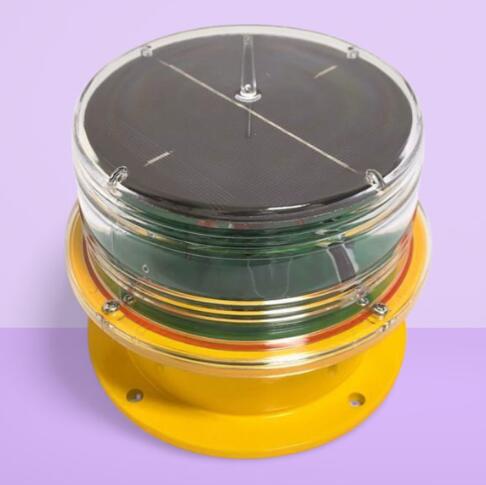Harnessing the Sun: The Rise of Solar Obstruction Lights in Aviation Safety
In an era where sustainability meets necessity, solar obstruction lights have emerged as a game-changing solution for aviation safety. These innovative lighting systems combine renewable energy with critical visibility functions, ensuring tall structures remain detectable to aircraft while minimizing environmental impact. This article explores the technology, applications, benefits, and future potential of solar obstruction lights in modern aviation infrastructure.
The Need for Solar Obstruction Lights
As global energy demands shift toward renewable sources and remote construction projects increase, traditional obstruction lighting systems face limitations. Solar obstruction lights address these challenges by:
Eliminating dependence on electrical grids
Reducing installation complexity in remote locations
Maintaining aviation safety standards sustainably

The aviation industry requires reliable marking of structures like communication towers, wind farms, and skyscrapers - making solar-powered solutions increasingly vital.
How Solar Obstruction Lights Work
These systems integrate several key components:
High-Efficiency Solar Panels
Convert sunlight into electrical energy
Designed for optimal performance in various weather conditions
Intelligent Battery Storage
Store energy for continuous nighttime operation
Advanced lithium-ion batteries ensure 5-7 day autonomy
LED Lighting Technology
Ultra-bright, low-energy consumption lights
| Solar Obstruction Lights |
Customizable flash patterns meeting ICAO/FAA standards
Smart Control Systems
Automatic dusk-to-dawn operation
Self-diagnostic capabilities for maintenance alerts
Types of Solar Obstruction Lights
Different applications require specific lighting configurations:
| Obstruction Lights |
1. Low-Intensity Solar Lights
Ideal for structures under 150 feet
Steady or flashing red LEDs
Common for rural communication towers
2. Medium-Intensity Systems
For structures 150-350 feet
Dual-mode (red/white) capability
Used at construction sites and power lines
3. High-Intensity Solutions
Structures exceeding 350 feet
Bright white strobes with 20+ mile visibility
Critical for offshore platforms and urban skyscrapers
Key Advantages Over Traditional Systems
Solar obstruction lights offer compelling benefits:
Zero Operational Costs: No electricity bills after installation
Rapid Deployment: No trenching or grid connections needed
Enhanced Reliability: Fewer points of failure than wired systems
Environmental Benefits: Carbon-neutral operation
Low Maintenance: Self-cleaning designs with 5-10 year lifespans
Regulatory Compliance and Standards
Modern solar obstruction lights meet stringent aviation requirements:
ICAO Annex 14 visibility standards
FAC 70/7460-1L intensity specifications
EN 61820 performance testing
IP65+ weatherproof ratings
Manufacturers must provide certification documents proving compliance for each installation.
Innovations Shaping the Future
The next generation of solar obstruction lights incorporates:
Adaptive Brightness Technology
Automatic intensity adjustment based on visibility conditions
Reduces light pollution while maintaining safety
Hybrid Power Systems
Solar-wind combinations for extreme environments
Backup generators for polar regions
IoT Connectivity
Remote monitoring via satellite/cellular networks
Predictive maintenance algorithms
Advanced Materials
Anti-icing coatings for cold climates
Self-cleaning solar panels for dusty regions
Real-World Applications
Solar obstruction lights serve diverse industries:
Telecommunications
Mountain-top relay stations
Mobile network towers
Renewable Energy
Wind farm marking
Solar power plant safety
Transportation
Bridge obstacle lighting
Airport perimeter markers
Urban Development
Temporary construction warnings
Permanent skyscraper lighting
Installation Best Practices
Proper implementation ensures optimal performance:
Site Assessment
Solar exposure analysis
Obstruction mapping
Positioning Strategy
Height-appropriate light placement
Multiple units for large structures
Maintenance Planning
Seasonal cleaning schedules
Battery replacement timelines
Challenges and Solutions
While highly effective, solar obstruction lights face some limitations:
Extended Cloud Cover: Addressed with oversized battery banks
Extreme Temperatures: Mitigated by thermal management systems
Wildlife Interference: Solved with specialized mounting designs
Vandalism Risks: Reduced through tamper-proof enclosures
The Environmental Impact
The sustainability benefits are significant:
Each solar unit prevents 2-5 tons of CO2 annually
Eliminates diesel generator use in remote locations
Reduces light pollution through directional LEDs
No toxic materials in modern lithium battery systems
Solar obstruction lights represent the perfect convergence of aviation safety and sustainable technology. As renewable energy adoption accelerates and construction projects expand into remote areas, these systems will become increasingly essential. With continuous advancements in efficiency, durability, and smart functionality, solar-powered solutions are setting new standards for obstruction lighting worldwide.
The aviation industry's future is brighter - and greener - thanks to these innovative systems that protect both aircraft and our planet. As regulations evolve and technology improves, solar obstruction lights will undoubtedly become the gold standard for hazard marking in the 21st century.
